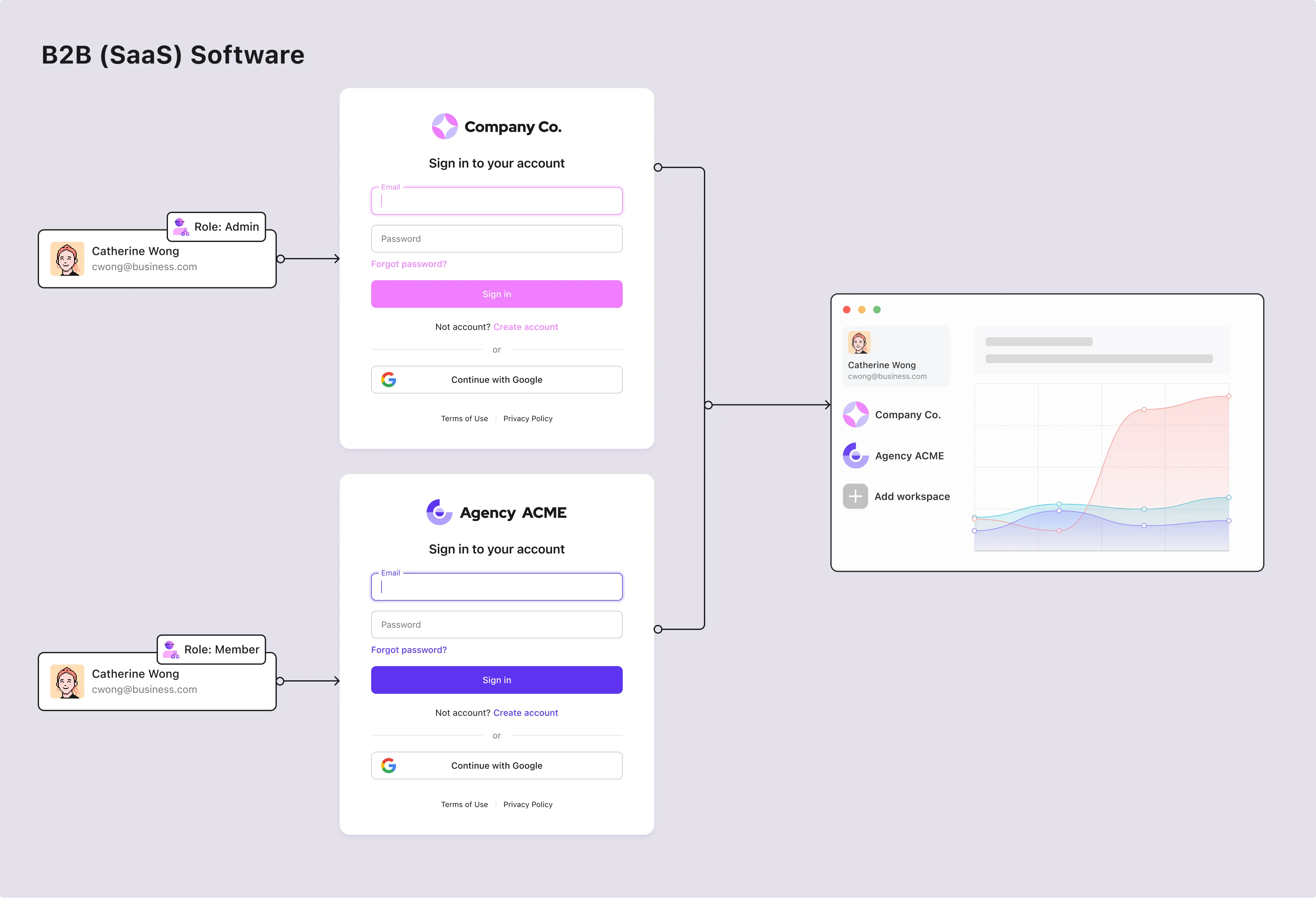Organizations
The organizations feature is particularly effective in multi-tenant SaaS and business-to-business (B2B) apps. In addition to individual users, your clients can also consist of teams, organizations, or entire companies.
With this fundamental element, you can build the must-have features for multi-tenancy apps, such as:
- A product that can be used by multiple organizations.
- Organization member provision on an invitation or just-in-time basis.
- Access controls that defined by roles assigned to members within an organization.
- Link organizations with Enterprise SSO (single sign-on) experience.
The term "organization" is also used in other forms, such as "workspace", "team", "company", etc. In Logto, we use "organization" as the generic term to represent the concept of multi-tenancy.

Planning considerations
When using up organizations, integration may involve different levels of effort, we suggest you cross-reference those to customize your development.
- Organization experience: What would the organization experience be? Can an organization admin create its organization? Can organization admins invite members? Do you intend to build a custom dashboard that allows administrators to self-manage their organization members’ identity-related info?
- Roles and access control: Does the application need users to have specific roles assigned within their organizations?
- Manage organizations through Logto Console and Management API: What configuration would you like to set up directly in the Logto Console and Management API?
For more planning resources, explore these two sections for ideas and inspiration.
Key questions to guide and inspire you in building the ideal architecture for your product.
Understand B2B identity models and its supported features in Logto.
Features for organizations
For multi-tenancy products, like B2B or SaaS services They involve organization creation, member invitation, and management. Use Logto Management API to integrate this into your apps.
The organization template helps you design access control in your multi-tenant app.
Quickly manage and set up organizations using the Logto Console and Management API.
Assign organization memberships and roles to users on-the-fly as they sign in to the system for the first time.
Related resources
Build a multi-tenant SaaS application: A complete guide from design to implementation